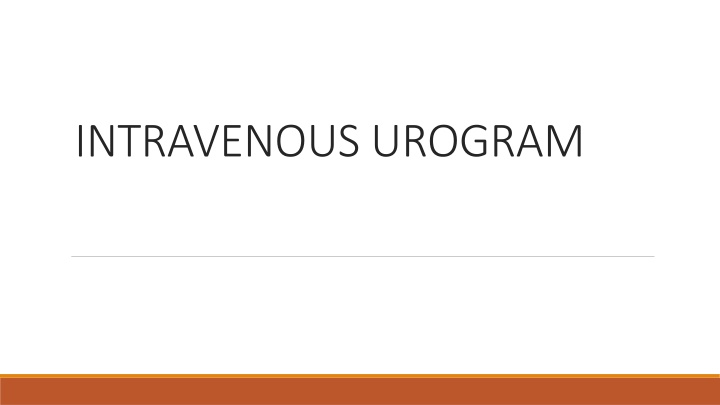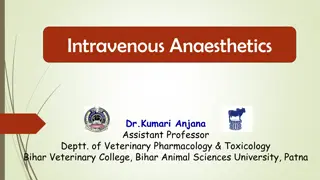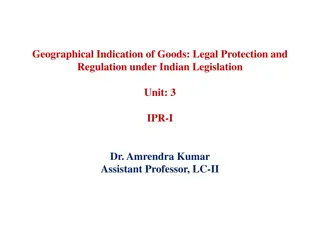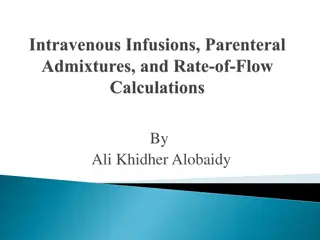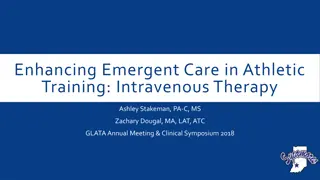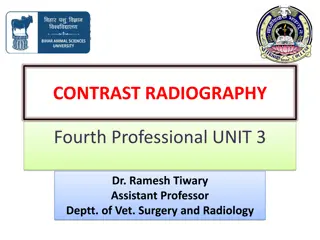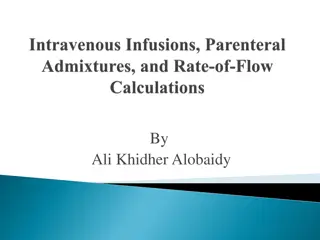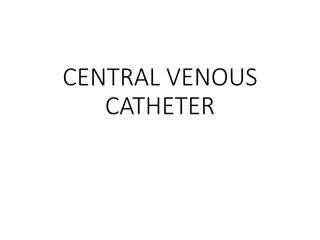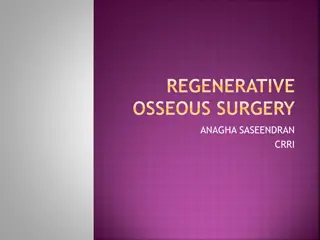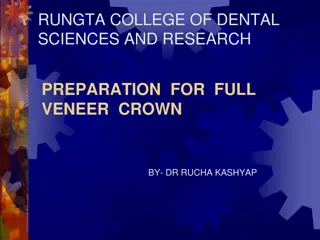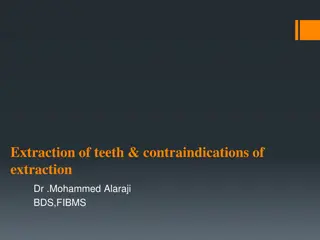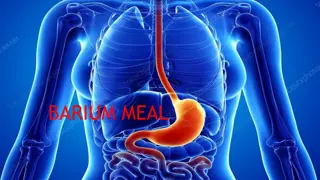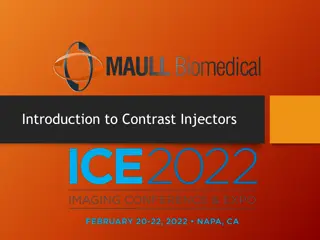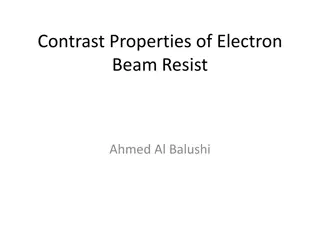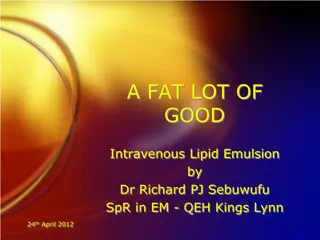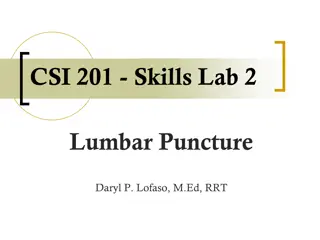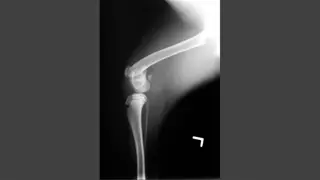Intravenous Urogram: Indications, Contraindications, Contrast, and Preparation
Intravenous urogram (IVU) is a diagnostic procedure used to screen the urinary tract for various conditions in adults and children. This comprehensive guide covers the indications, contraindications, contrast media, and preparation protocols for IVU, including dosage recommendations and procedural details. Learn about the importance of IVU in evaluating renal and urinary abnormalities, identifying obstructive uropathy, and differentiating kidney function. Discover how to prepare patients for IVU, manage iodine sensitivity, and ensure a safe and effective imaging process.
Download Presentation

Please find below an Image/Link to download the presentation.
The content on the website is provided AS IS for your information and personal use only. It may not be sold, licensed, or shared on other websites without obtaining consent from the author.If you encounter any issues during the download, it is possible that the publisher has removed the file from their server.
You are allowed to download the files provided on this website for personal or commercial use, subject to the condition that they are used lawfully. All files are the property of their respective owners.
The content on the website is provided AS IS for your information and personal use only. It may not be sold, licensed, or shared on other websites without obtaining consent from the author.
E N D
Presentation Transcript
INDICATIONS ADULTS: Screening of entire urinary tract especially in cases of haematuria or pyuria. Diseases of renal collecting system and renal pelvis. Differentiation of function of both kidneys. Abnormalities of the ureter. Obstructive uropathy-IVU is the gold standard. CHILDREN: . VATER anomalies: These patients have vertebral, anal, tracheooesophageal, and renal anomalies. Renal anomalies are seen in about 90% of patients. Malformation of urinary tract, e.g., polycystic disease, PUJ obstruction etc.
CONTRAINDICATIONS Iodine sensitivity. Pregnancy Severe history of anaphylaxis previously carries 30% risk of similar reaction on a subsequent occasion. The risk is lower with low osmolar contrast media.
CONTRAST CONTRAST MEDIA In adults Non-ionic contrast media Iohexol-Omnipaque 300 mg I/ ml-40-80 ml or 350 mg I/ ml 40-80ml In children 240 mg I/ml,300mg I/ml < 7 kg 4 ml/kg to 3 ml/kg and > 7 Kg 3 ml/kg to 2 ml/kg Dose is 1-2 ml /kg body weight < 6 months 10 ml 6 months-2 yrs 20 ml 2-10 yrs 20-40 ml.
PREPARATION ADULTS: Ask for any history of Diabetes mellitus, Pheochromocytoma, Renal disease, or allergy to drugs and any specific foods. Fasting for 4 hours. Do not dehydrate the patient Low residue diet like Dal-chapati/Non-vegetation food and plenty of oral fluids. CHILDREN: No paediatric patient should ever be purposely dehydrated as it is hazardous to do so. Colon should be empty for I.V.U. For this, laxatives can be given 3-4 hours fasting.
PROCEDURE ADULTS: Patient is placed in supine position with pelvis at cathode side of the tube. A support is placed under patient's knees to reduce lordotic curvature of lumbosacral spine and provide comfort. A scout film is taken including the kidneys, ureters, bladder and urethral regions on a large size film. Contrast media is injected intravenously into a prominent vein in the arm Cortical nephrogram is seen within 20 seconds of contrast injection. Pyelogram (contrast in calyces) is seen 2 minutes after contrast injection.
CHILDREN: Equipment should be capable of short exposures to avoid motion blurring. Usually a moving grid is used. Source to image distance- 40 inches or 1 metre. Contrast - non-ionic best. Dose 1-2 ml/kg. First film is taken 15 min after.
STANDARD VIEWS Plain X-ray KUB /Scout film-14" x 17" 1 minute film-10" x 12" 5 minute film-10" x 12 10 minute film-15" x 12 15 minute film-15" x 12 35 minute film-14" x 17 Post void film-10" x 8"
COMPLICATIONS Hypersensitivity reactions Upper arm or shoulder pain Contrast extravasation
AFTER CARE Observation for 6 hours. Watch for late contrast reactions. Prevention of dehydration. In high risk patients-renal function tests should be done to watch for deterioration.
